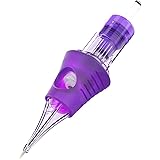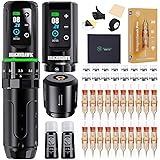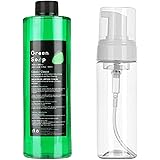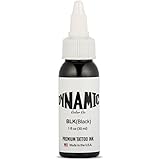The intricate world of custom airbrush art often begins with a fundamental decision: selecting the perfect lettering style. As demonstrated in the accompanying video by Mike from Mike’s Custom Airbrush, mastering various airbrush lettering styles is essential for any artist looking to provide diverse options and create impactful designs. This guide delves deeper into the foundational styles showcased, offering insights into their characteristics, ideal applications, and how they contribute to a compelling visual narrative.
For many artists, the journey into airbrush lettering is initiated with the creation of a sample board. Such a board serves as a visual catalog, allowing clients to easily browse and select their preferred aesthetic. The choices presented should ideally strike a balance between offering sufficient variety and preventing overwhelming complexity. A well-curated selection of fonts is crucial for both operational efficiency and client satisfaction within custom art endeavors.
Understanding the Core Airbrush Lettering Styles
A broad spectrum of artistic expression is encompassed within the different airbrush lettering styles available today. Each style possesses unique attributes that can profoundly influence the overall message and feeling of a completed piece. From bold and assertive forms to delicate and flowing scripts, the chosen font becomes a silent communicator of the design’s intent.
Block Lettering: The Foundation of Clarity
Block lettering is considered a cornerstone in the realm of custom airbrush designs. These letters are characterized by their sturdy, geometric shapes and robust appearance. They stand tall and wide, much like well-constructed architectural elements, signifying strength and straightforwardness.
This style is frequently chosen when a clear, unambiguous message is paramount. Block letters ensure high legibility from a distance, making them ideal for banners, vehicle graphics, or large signs where immediate recognition is desired. An impactful presence is reliably achieved through the use of block lettering, establishing a solid visual anchor.
Script Lettering: Elegance in Flow
Script lettering offers a stark contrast to the rigidity of block letters, embodying grace and fluidity. This style mimics the elegant strokes of handwriting, with letters often connected in a seamless, cursive fashion. A sense of refinement and personal touch is consistently conveyed through its flowing lines.
The gentle curves and flourishes inherent in script make it suitable for projects requiring a touch of sophistication or sentimentality. Personal names on custom apparel, wedding memorabilia, or intricate mural details are often enhanced by script lettering. This style is observed to add a delicate yet powerful artistic flair, akin to a carefully penned signature.
Bubble Lettering: Playful and Approachable Forms
Often embraced for its jovial and lighthearted character, bubble lettering presents letters with rounded, inflated appearances. Each character seems to swell with air, resembling cheerful balloons that bounce across the design. A sense of youthful exuberance is inherently projected by this distinctive style.
Bubble letters are frequently utilized in designs intended for younger audiences or those aiming for a whimsical, fun aesthetic. Children’s room décor, playful event signage, or cartoon-inspired custom art pieces are excellent candidates for this style. Its soft edges and inviting forms create an immediate impression of amiability and joy.
Print Lettering: Prioritizing Readability
For scenarios where extensive text is required, standard print lettering becomes indispensable. This style emphasizes clarity and ease of reading above elaborate artistic embellishment. It acts like a crystal-clear pane of glass, allowing the viewer to absorb information without any visual obstruction.
When numerous words need to be presented legibly on a custom airbrush piece, print lettering is typically chosen. It ensures that the message is conveyed directly and efficiently, making it highly practical for informative signs or complex textual elements. While perhaps less flashy than other styles, its fundamental purpose of clear communication is expertly fulfilled.
Box Lettering: Structured and Contained Designs
Box lettering involves a unique approach where letters are either enclosed within or distinctly defined by box-like structures. This method provides a contained and organized aesthetic, much like individual items neatly placed within separate compartments. A sense of order and precision is carefully cultivated through this style.
This style is often preferred when a clean, framed look is desired, allowing for creative treatments within the letter boundaries while maintaining overall structure. It can be adapted to various themes, offering a subtle yet impactful way to segment or highlight specific text. The inherent structure of box lettering facilitates diverse decorative possibilities, allowing for intricate detailing within its defined parameters.
Graffiti Lettering: Dynamic Urban Expression
Graffiti lettering stands as a vibrant testament to urban art, characterized by its bold, stylized, and often complex forms. This style is not merely written; it is architecturally built, with letters frequently overlapping, boasting sharp angles, and radiating a sense of dynamic motion. It embodies the rebellious spirit and artistic freedom found on city walls, transforming simple text into a powerful visual statement.
Originally inspired by street art, graffiti lettering injects an edgy, contemporary feel into any airbrush project. It is perfect for capturing a strong personality or conveying a sense of energy and modernity. When a design calls for an assertive, non-traditional aesthetic, graffiti lettering is an excellent choice. It allows for a high degree of personalization, often being adapted to reflect individual artistic signatures and distinct creative visions.
Scratch Lettering: Rustic and Raw Aesthetic
Another style that brings a unique texture to airbrush art is scratch lettering. This technique simulates the appearance of letters that have been roughly etched or scratched onto a surface. The edges are often jagged and irregular, giving the impression of an organic, distressed, or even ancient marking.
Scratch lettering is frequently employed to achieve a rugged, vintage, or worn-out look. It provides a tactile visual quality, suggesting a history or a handcrafted origin, much like marks on weathered wood or stone. For projects aiming to evoke a sense of authenticity, age, or a rebellious, unpolished charm, this style is commendably effective. A raw and unfiltered aesthetic is distinctively presented through its intentional imperfections.
The Artistry of Application: From Conception to Completion
The journey from a concept to a finished airbrush piece involves several critical steps, especially when it comes to lettering. The initial approach to applying text can significantly impact the final quality and artist’s efficiency. Artists often choose between freehand techniques and detailed sketching, depending on the project’s demands and their personal expertise.
Precision Through Sketching Versus Freehand Mastery
For intricate designs or when creating a sample board, a preliminary light sketch is often utilized to ensure perfect centering and proportional balance. This preparatory step helps mitigate errors and allows for meticulous planning of the layout. Conversely, experienced airbrush artists are frequently observed freehanding letters directly onto surfaces like T-shirts or vehicle panels, relying on practiced skill and an intuitive eye for design. Such mastery allows for spontaneous creativity while maintaining precision.
Enhancing Lettering with Color and Borders
Once the basic letter forms are established, the next phase involves enriching them with color and supplementary details. The application of color is not merely for aesthetic appeal; it is a powerful tool for visual separation and emphasis. Different hues can make letters pop, define their volume, or integrate them seamlessly into the overall artwork.
Adding a border or an outline around letters further enhances their definition and presence. This element acts like a frame, drawing attention to the text and separating it from the background. A well-executed border contributes significantly to the crispness and professional finish of the airbrush lettering styles, ensuring that the letters are not only seen but truly admired.
The exploration of diverse airbrush lettering styles provides an expansive toolkit for custom artists. By understanding the unique character and application of each style, designers are empowered to select the perfect aesthetic for any project, transforming ordinary surfaces into extraordinary canvases of personalized expression. Continued practice with these various forms will solidify an artist’s skill and broaden their creative horizons within the dynamic field of airbrush art.










